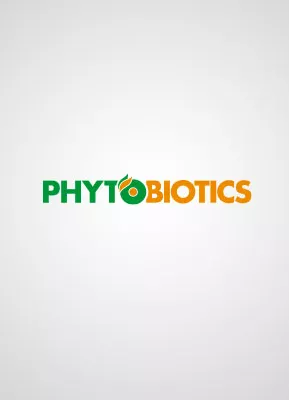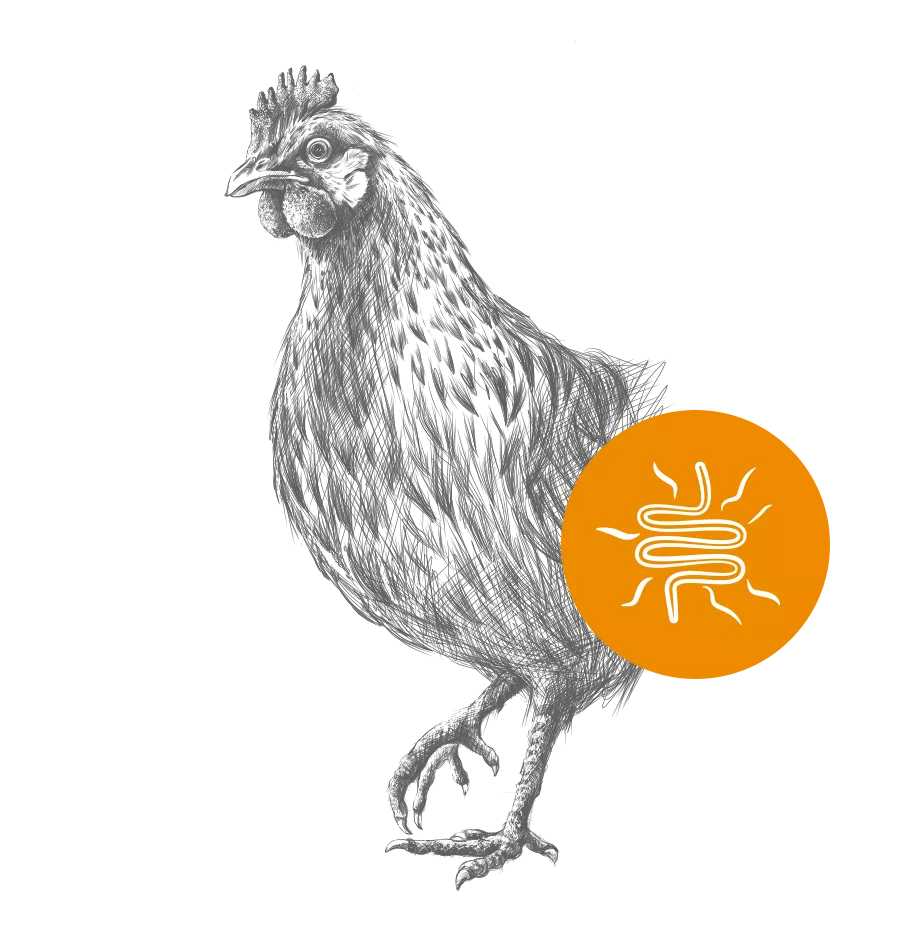Necrotic enteritis in poultry
What is the problem?
It is estimated that Clostridium perfringens induced Necrotic Enteritis (NE) costs the poultry industry 5-6 billion USD on a global level. Although clinical cases of NE are not seen too often, affected flocks will show a mortality up to 30%. However, the main costs result from the subclinical form of NE. Skinner et al. (2010) estimated a 12% reduction in body weight and a 10.9% increase in FCR due to damage of the intestinal mucosa compared to healthy birds. Based on literature data, the authors assumed an incidence of 20%. Overall, subclinical NE is associated with losses of 0.05 € per bird.
NE was reported in the literature as early as 1930. As the broiler industry wasn’t specialized at that time, the disease wasn’t taken seriously before the late 1960’s, when clinical cases were reported. With the onset of the use of antimicrobial growth promoters (AGPs) in broiler production, NE was again an almost forgotten disease. In 2006, when AGPs were banned in the EU, all of a sudden, everyone began to talk about NE, as the disease “celebrated” a resurgence due to the declining use of AGPs. As more and more countries are following the lead of the EU in reducing AGPs in poultry production, the industry is searching for new tools to control NE.
"Who" causes the problem?
Clostridium perfringens (C.p.) is a gram-positive, rod-shaped, anaerobic, spore-forming bacterium. C.p. is ubiquitous and is commonly present in the large intestine. Disease will occur if C.p. overgrows in the small intestine under predisposing factors. Due to the spore-forming, it is very difficult to fight and control the disease and there are a lot of possible ways of infection (Fig 1.):
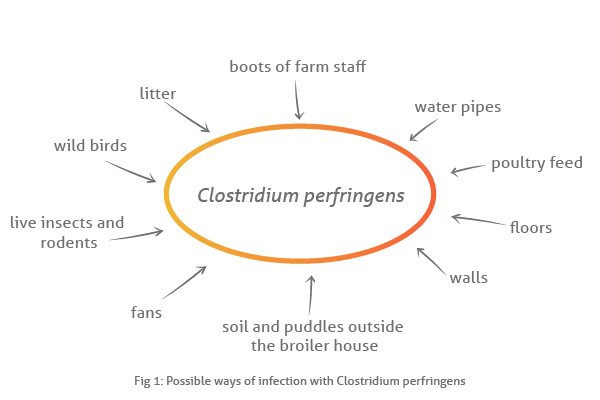
Not every C.p. strain is pathogenic. Next to the toxin NetB (Necrotic Enteritis toxin B-like), which is essential for triggering the disease, several predisposing factors may influence the occurrence of NE (Fig. 2):
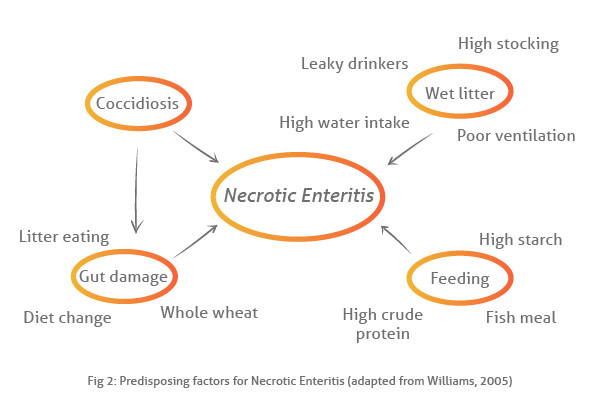
How can Necrotic Enteritis be prevented?
In addition to a good coccidiosis management, good husbandry practice and gut health management are the main factors in NE prevention. Some producers switch to a vegetable diet to promote protein digestibility. Consequently, less proteins reach the hindgut, where C.p. physiologically lives without causing harm. As less nutrients reach the large intestine, less nutrients are available for C.p., minimizing the risk of a C.p. overgrowth. By promoting gut health, an increased nutrient absorption can be achieved while at the same time improving gut integrity and thereby contributing to a higher resistance to pathogens. Here, feed additives may assist in supporting gut health and contribute to support animals in challenging situations – like an NE infection.

About the author
Dr. Anja Pastor did her PhD in broiler nutrition. At Phytobiotics, she is part of the Sangrovit® product mangement, focusing on applications in poultry by defining market needs and supporting these needs with scientific research. Anja enjoys sharing her enthusiasm about poultry with others, for example, when giving technical trainings or attending scientific conferences.
Phytobiotics Sangrovit® –
strong poultry – strong profits
Our Phytobiotics Sangrovit® product line ensures a consistent feed intake throughout challenging periods, supporting the bird in today’s production systems and having a positive contribution to efficient poultry meat or egg production. With Sangrovit® you stabilize and strengthen your profits at all times. Strong birds make your life easier!
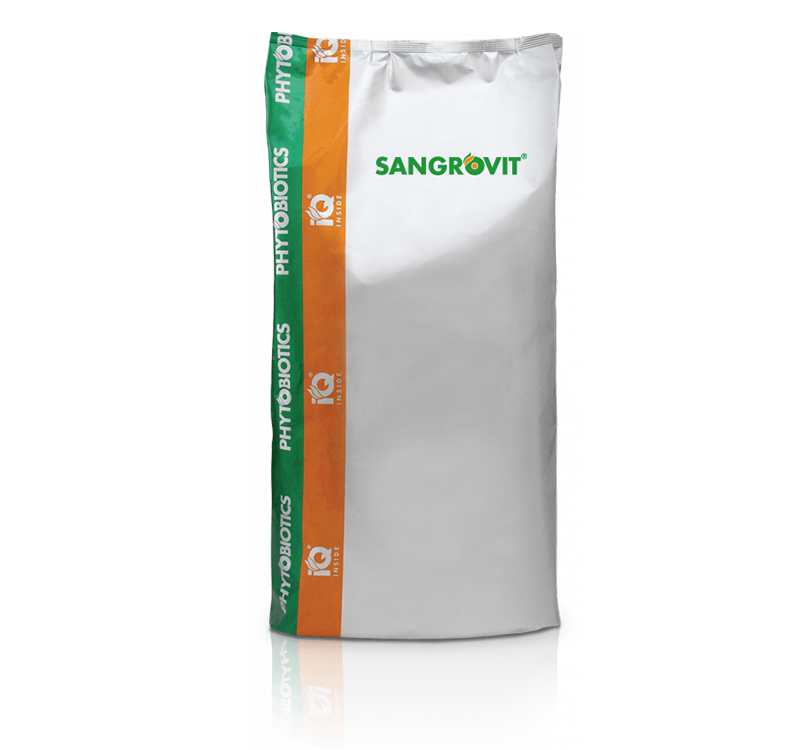
And what moves you? – Get in touch with us.
